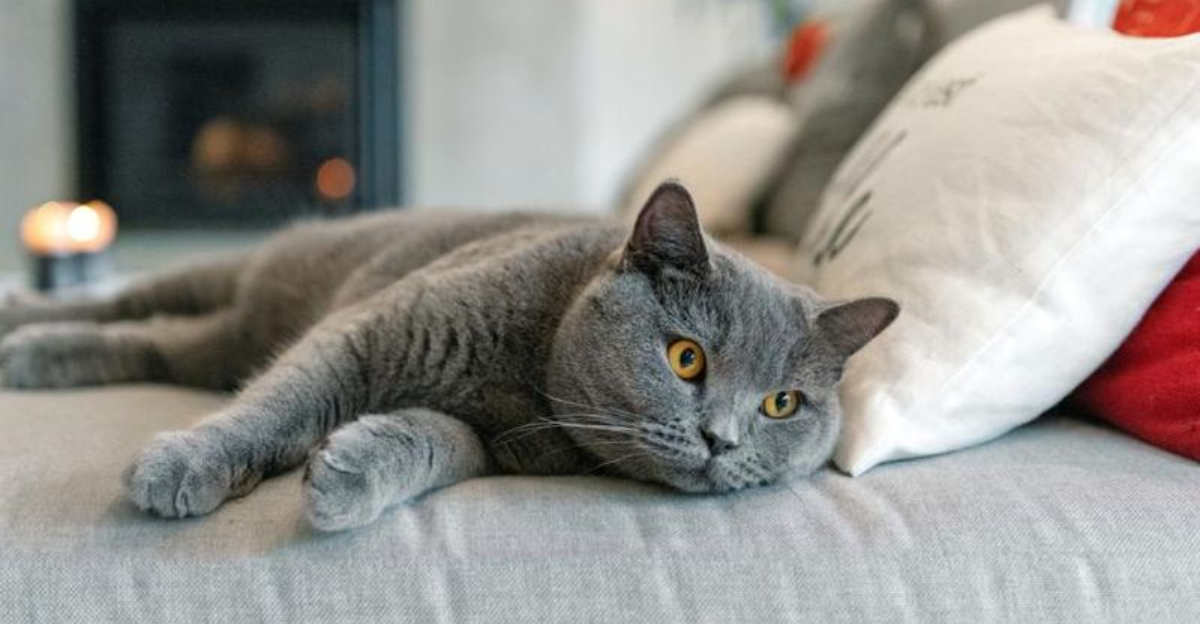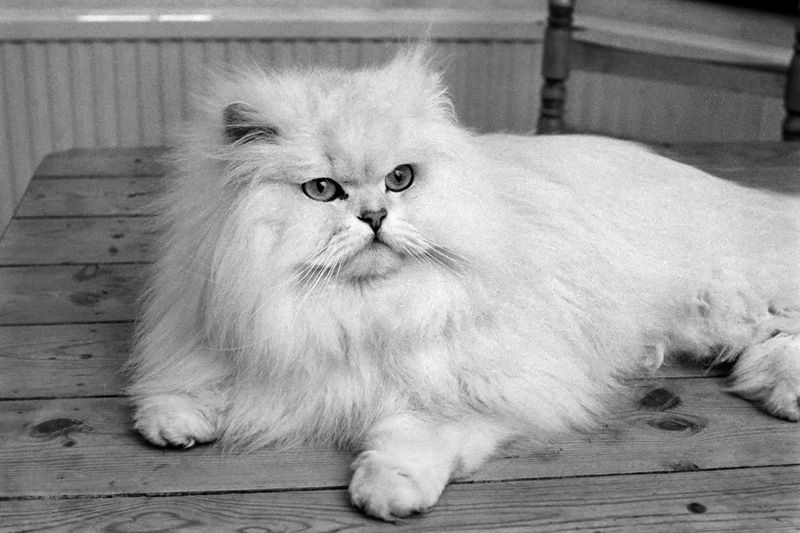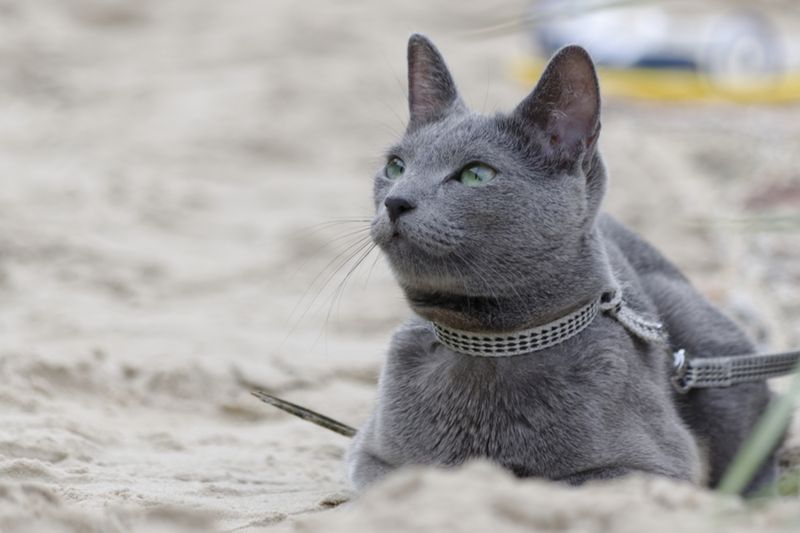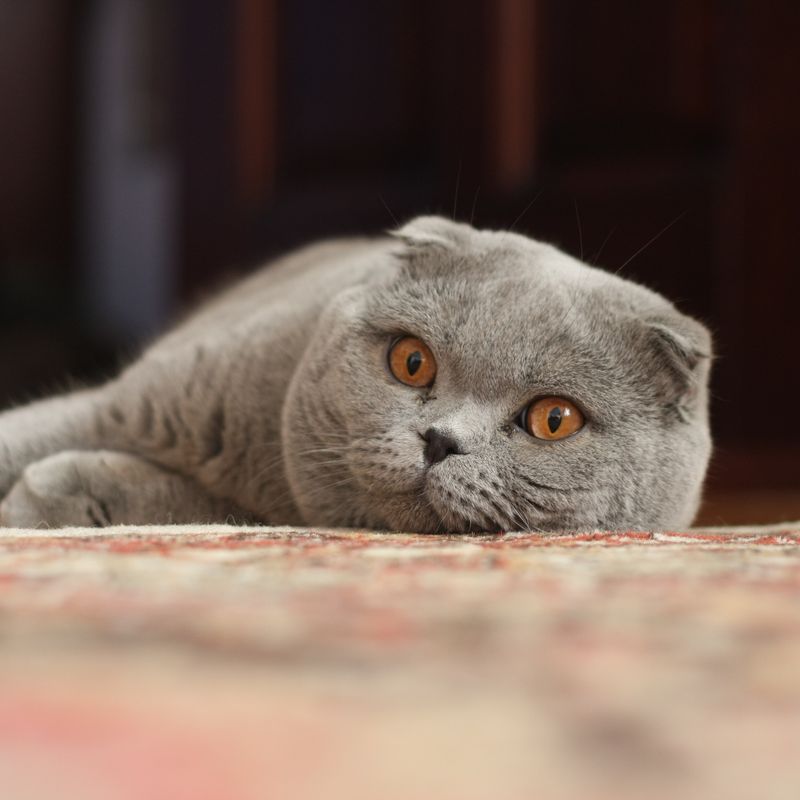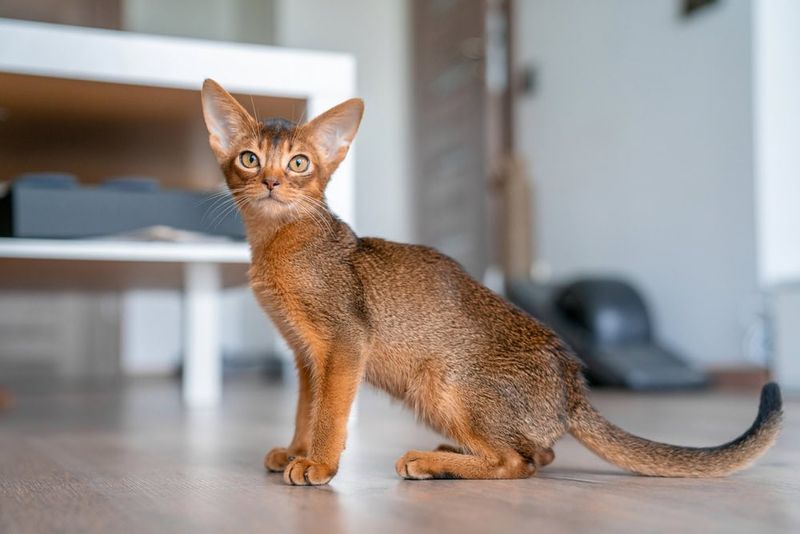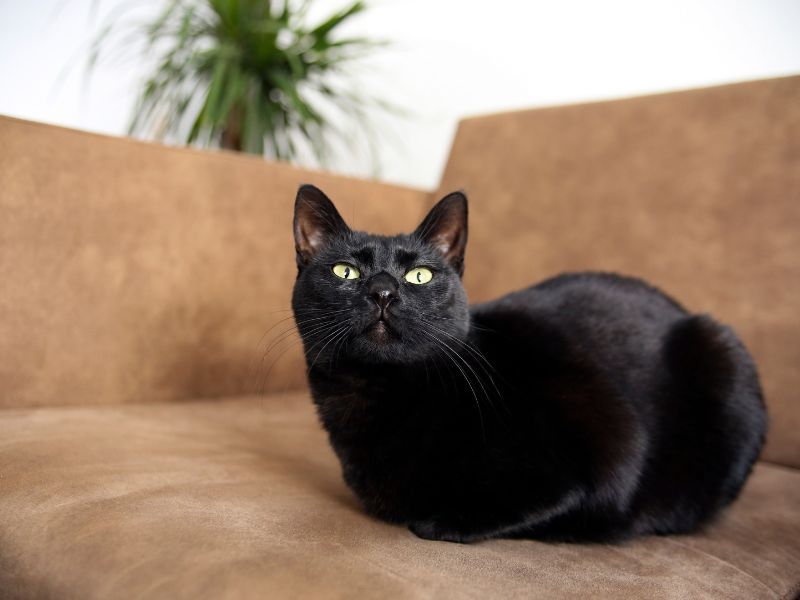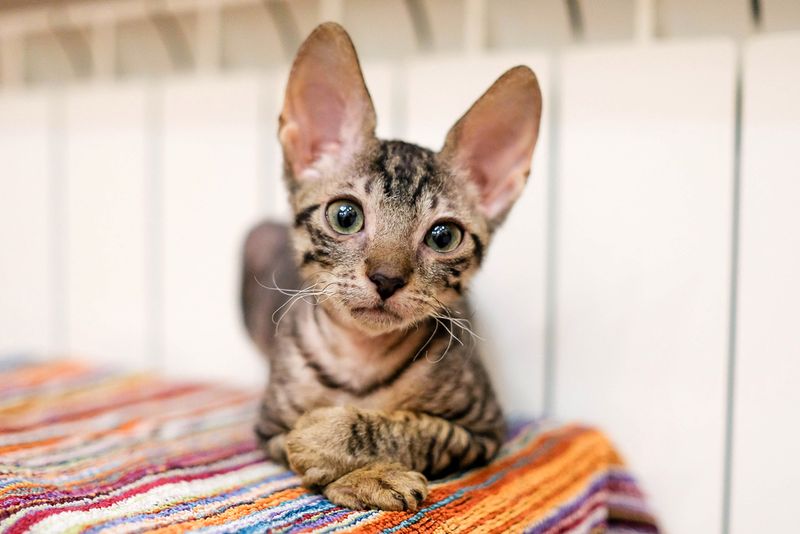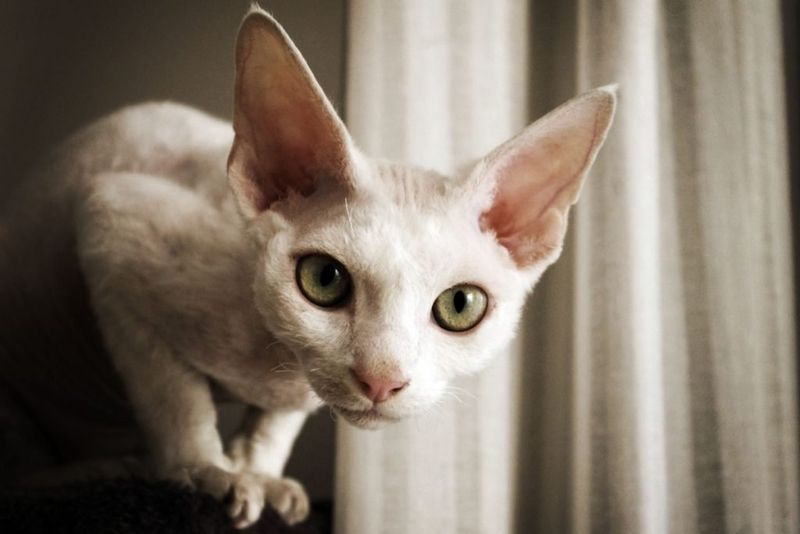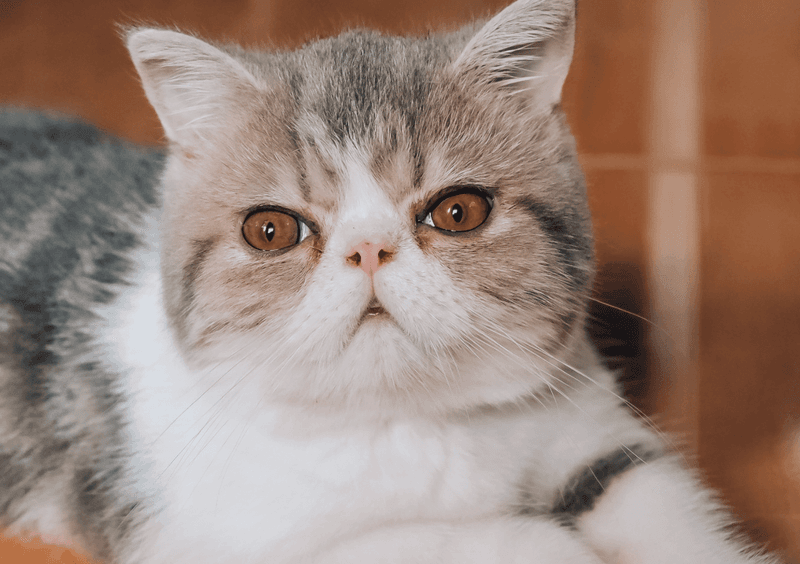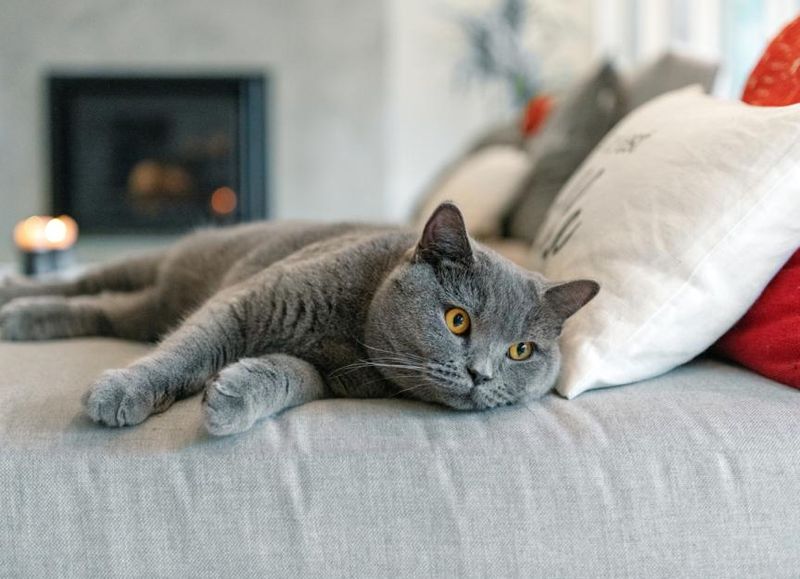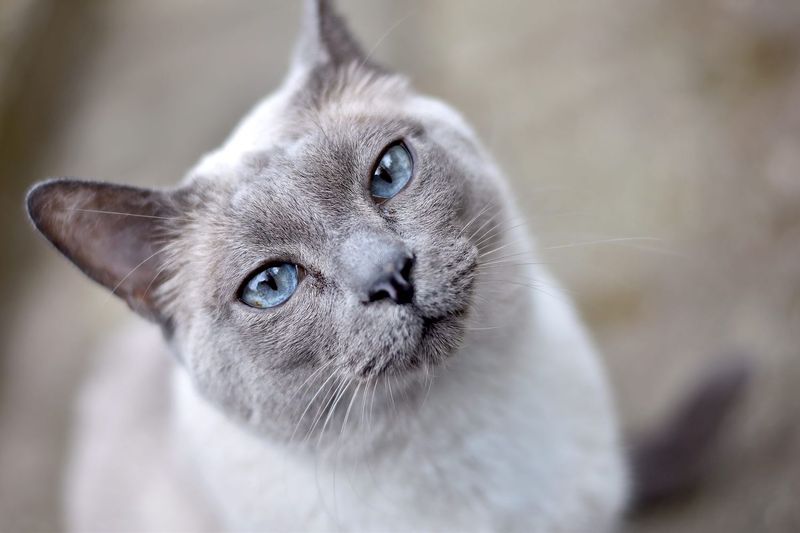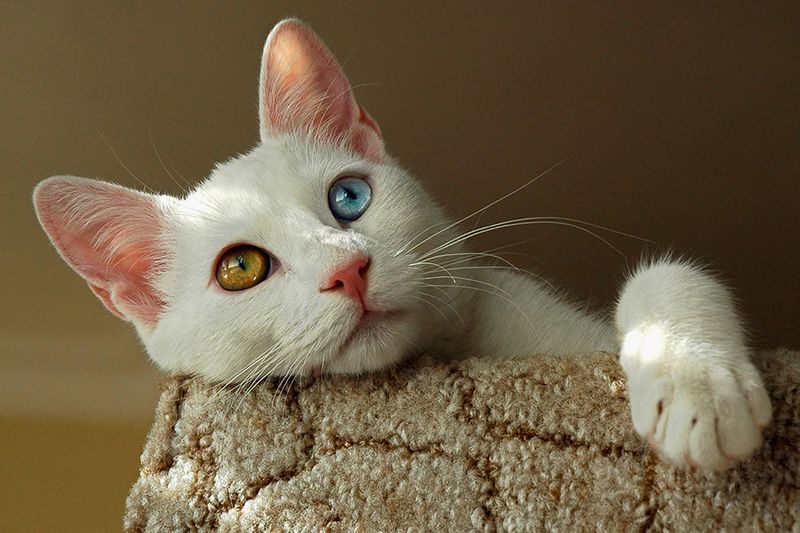📖 Table of Content:
Some cat breeds have carried stubborn reputations for decades, shaped more by myth than experience. Labels like “aggressive,” “aloof,” or “high-maintenance” often follow certain breeds without a fair examination. These assumptions can discourage potential owners from discovering a cat’s true nature.
Misunderstood breeds are frequently judged by exaggerated traits or isolated behavior rather than typical temperament. A cat known for being vocal may be misread as demanding, while a calm breed might unfairly be called lazy. Such reputations often overlook the individuality and adaptability of each cat.
Understanding the real characteristics behind the stereotypes reveals a more balanced view of these felines. Many so-called “difficult” breeds form strong bonds, enjoy affection, or thrive in calm homes. Looking beyond labels helps reveal companions that are far more charming than their reputations suggest.
1. Siamese
Known for their loud voices and demanding personalities, Siamese cats are often labeled as annoying or high-maintenance.
The truth is that Siamese cats are incredibly intelligent and form deep bonds with their owners. Their chattiness comes from a desire to communicate and be involved in everything you do.
These blue-eyed beauties are actually among the most loyal cat breeds, often following their humans from room to room. Many Siamese owners describe their pets as dog-like in their devotion. Far from being a nuisance, their vocal nature simply shows how engaged they are with their environment.
2. Persian
Persians have a reputation for being lazy, unintelligent couch potatoes. This mischaracterization doesn’t give these dignified cats enough credit. While they do enjoy lounging and maintaining a calm demeanor, Persians are actually making thoughtful observations of their surroundings.
These fluffy companions prefer peaceful environments and express affection in subtle ways. They’re selective about when to exert energy, which is actually a sign of intelligence rather than laziness.
Persians form strong bonds with their families but don’t feel the need to show off. Their seemingly aloof nature is often just a preference for quality interaction over quantity.
3. Sphynx
The hairless Sphynx often gets labeled as creepy or alien-like due to their unusual appearance. People assume these cats are cold or unfriendly based solely on looks. Nothing could be further from the truth! Sphynx cats are among the most affectionate and people-oriented breeds in the feline world.
Without fur to keep them warm, they actively seek human contact for heat and comfort. Their warm, suede-like skin feels uniquely pleasant to touch.
Sphynx cats typically greet visitors enthusiastically and demand attention from everyone in the household. Their outgoing personalities and silly antics make them entertaining companions who form strong bonds with their families.
4. Bengal
Due to their energetic temperament and wild-looking appearance, Bengals are sometimes viewed as destructive or unfit for typical households. Their spotted coats and agile frames add to the misconception that they’re too wild for domestic life. In reality, Bengals are domesticated cats that thrive with proper stimulation and understanding.
These spotted beauties do need mental stimulation and physical activity, but they’re highly trainable and responsive. Bengals can learn tricks, walk on leashes, and even enjoy water play.
They form strong bonds with their families and are often quite vocal about their affection. With appropriate outlets for their energy, Bengals make loyal, engaging companions who bring excitement to everyday life.
5. Russian Blue
Because they’re slow to warm up to strangers, Russian Blues are sometimes seen as distant or cold. This reputation doesn’t reflect their affectionate nature with trusted companions. Their quiet observation is simply part of a calm, reflective temperament.
Once comfortable, these silver-blue cats show remarkable loyalty and affection. They follow favorite family members around the house and offer gentle companionship. Russian Blues are sensitive to human emotions and often provide comfort during difficult times.
Their quiet intelligence makes them excellent problem-solvers who can learn routines quickly. Far from being aloof, they simply save their affection for those who’ve earned their trust.
6. Maine Coon
Maine Coons sometimes frighten people with their massive size and wild appearance. Standing up to 16 inches tall and weighing up to 25 pounds, these gentle giants can seem intimidating at first glance. Their tufted ears and lynx-like features add to this misconception.
Behind that impressive exterior lies one of the most good-natured cat breeds around. Maine Coons are famously patient with children and other pets.
They communicate with soft chirps and trills rather than loud meows. Their playful personalities persist well into adulthood, with many enjoying fetch games and puzzle toys. Despite their size, they move gracefully and rarely knock things over.
7. Scottish Fold
Concerns about ear-related health issues have cast a shadow over the Scottish Fold’s distinctive appearance. These worries have prompted regulatory action in some parts of the world. Despite this, countless Scottish Folds remain healthy and well-adjusted when bred with attention to genetic wellness.
These round-faced cats have sweet temperaments that match their adorable appearance. They adapt well to various living situations and get along with children and other pets. Scottish Folds enjoy interactive play but aren’t overly demanding of attention.
Their moderate activity level makes them suitable for apartments. They form strong bonds with their families while maintaining an independent streak. When considering this breed, research breeders who prioritize health over extreme physical traits.
8. Ragdoll
Ragdolls have been labeled as unintelligent due to their floppy, relaxed nature when held. This misconception stems from their tendency to go limp in your arms – the trait that gave them their name. In reality, Ragdolls are quite smart; they simply prioritize relaxation over resistance.
These blue-eyed beauties learn quickly and can be trained to perform tricks and follow commands. They remember routines and recognize their names. Ragdolls show problem-solving abilities when motivated by treats or toys. Their calm demeanor reflects confidence rather than confusion.
They make thoughtful choices about when to expend energy, preferring meaningful interaction over random activity. This deliberate approach to life is often mistaken for simplicity when it’s actually a form of emotional intelligence.
9. Abyssinian
Some view Abyssinians as too restless and detached to form real connections. Their lively personalities and love of exploration are sometimes mistaken for aloofness. However, their affection runs deep once trust is earned.
These ticked-coat cats do love movement and exploration, but they’re also deeply attached to their people. Abyssinians show affection through proximity rather than cuddling – they want to be near you while maintaining their independence. They’re excellent communicators who use body language and expressive eyes to connect.
Their playfulness comes from high intelligence that needs regular stimulation. When properly engaged, Abyssinians form loyal bonds and can become quite devoted to their favorite humans.
10. Bombay
Superstitions surrounding black cats have cast an undeserved shadow over the Bombay breed. Their dark coats and glowing eyes may fuel myths of bad luck or mystery. In reality, Bombays are affectionate companions with warm, loyal personalities.
Bombays combine the best traits of American Shorthairs and Burmese cats. They form strong attachments to their humans and often follow them from room to room. Their playful nature lasts throughout adulthood, making them entertaining companions.
Bombays adapt well to various living situations and generally get along with children and other pets. Their velvety coats feel like warm silk to the touch, inviting affectionate petting sessions.
11. Cornish Rex
With their rippled fur and delicate build, Cornish Rex cats are sometimes unfairly judged based on appearance alone. Their large ears and narrow heads can seem unusual to the unaccustomed eye. These features, though striking, have no bearing on their health or vitality when responsibly bred.
These distinctive cats are actually quite healthy and robust despite their delicate appearance. Their curly coat results from a natural genetic mutation and requires minimal grooming. Cornish Rex cats are warm to the touch and love cuddling with their humans. They maintain kitten-like playfulness throughout their lives.
Their athletic abilities are impressive – they can jump to remarkable heights and perform acrobatic feats. Their social nature makes them excellent family cats who actively participate in household activities.
12. Devon Rex
Often called “elf-like,” Devon Rex cats get labeled as odd or unhealthy because of their delicate coat and oversized ears. Their high-spirited nature and curiosity can come off as mischief to the unfamiliar. These assumptions overlook a hardy, intelligent breed full of personality.
These pixie-like cats are actually quite sturdy and healthy. Their playful antics come from high intelligence and a desire to interact with their humans. Devon Rex cats form exceptionally strong bonds with their families and are often described as “velcro cats” who want to be involved in everything.
They’re known for their ability to learn tricks and commands, responding well to clicker training. Their warm, soft coat requires minimal grooming, making them lower-maintenance than they appear.
13. Exotic Shorthair
The flat-faced Exotic Shorthair is commonly thought to have breathing and health problems. While brachycephalic issues are sometimes present, ethical breeding has helped enhance their overall health. These sweet, teddy-bear cats merit appreciation for their delightful character instead of judgment based on appearance.
Exotic Shorthairs combine Persian personality with easier maintenance. They form deep bonds with their families while maintaining a peaceful demeanor. Unlike their Persian cousins, they enjoy occasional play sessions and interactive toys. Their plush coats require weekly brushing rather than daily grooming.
These affectionate cats adapt well to apartment living and get along with children who respect their moderate energy level. Their expressive eyes communicate volumes, showing their emotional intelligence and connection to their humans.
14. Savannah
Savannahs face fear and misunderstanding due to their serval ancestry and wild appearance. Their large size and spotted coats can make people assume they’re dangerous or undomesticated. Some regions even ban these cats based on misconceptions about their behavior.
Well-socialized Savannahs are actually devoted companions who bond strongly with their families. They’re highly intelligent and can learn commands and tricks similar to dogs. Their energy needs are higher than average, but they respond well to structured play and mental stimulation.
Later generation Savannahs (F4 and beyond) have temperaments very similar to domestic cats while maintaining their striking appearance. They’re known for being loyal, curious, and social cats who enjoy family life and often get along well with cat-friendly dogs.
15. British Shorthair
People often label British Shorthairs as standoffish or unemotional because they’re not the type to be lap cats. This stereotype ignores the subtle and unique ways they demonstrate their affection.
These plush-coated cats express affection through proximity rather than climbing on you. They’ll sit beside you, sleep near you, and follow you from room to room. British Shorthairs appreciate interactive play but don’t demand constant attention. Their moderate activity level makes them ideal for busy households.
They form strong bonds with family members while maintaining dignity and self-sufficiency. Their slow maturation means they keep playful qualities into adulthood. Their reserved nature with strangers simply shows discernment rather than unfriendliness.
16. Tonkinese
Caught between the Siamese and Burmese, Tonkinese cats can be overshadowed by their more famous relatives. They’re often unfairly judged as overly vocal due to Siamese stereotypes, while their moderate, harmonious appearance is frequently underestimated.
These medium-sized cats combine the best of both parent breeds. Tonkinese maintain the social nature of Siamese without the extreme vocalization. They show the affection of Burmese while keeping a playful, active spirit. Their intelligence makes them quick learners who enjoy interactive toys and games.
Tonkinese form strong bonds with their families and do best in homes where they receive plenty of attention and interaction. Their beautiful aqua eyes reflect their engaging, people-oriented personalities.
17. Turkish Van
Many remain skeptical of the Turkish Van’s unusual love for water, dismissing tales of their swimming as exaggerated. Additionally, their changing coat with the seasons and late maturation can be mistaken for illness or developmental delays.
These ancient cats genuinely enjoy water play, with specially adapted water-resistant coats that make swimming comfortable. Their intelligence and independent nature reflect their natural development with minimal human intervention. Turkish Vans form strong bonds with selected family members while maintaining healthy self-sufficiency.
Their distinctive colored head and tail with white body (the “Van pattern”) serves a purpose – providing sun protection in their native region while keeping their bodies cool. These athletic cats excel at jumping and climbing, bringing dynamic energy to their households.
